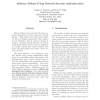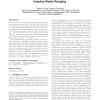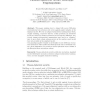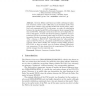56 search results - page 3 / 12 » Standard Security Does Not Imply Security against Selective-... |
VEE
2006
ACM
14 years 1 months ago
2006
ACM
One of the most common forms of security attacks involves exploiting a vulnerability to inject malicious code into an executing application and then cause the injected code to be ...
IWIA
2005
IEEE
14 years 19 days ago
2005
IEEE
Malware defenses have primarily relied upon intrusion fingerprints to detect suspicious network behavior. While effective for discovering computers that are already compromised,...
WISEC
2010
ACM
14 years 2 months ago
2010
ACM
We expose the vulnerability of an emerging wireless ranging technology, impulse radio ultra-wide band (IR-UWB), to distance-decreasing attacks on the physical communication layer ...
PROVSEC
2009
Springer
14 years 1 months ago
2009
Springer
This paper explains how to design fully secure RSA-type cryptosystems from schemes only secure against passive attacks, in the standard model. We rely on instance-independence assu...
ASIACRYPT
2006
Springer
13 years 10 months ago
2006
Springer
Abstract. Recently, Bellare and Palacio succeeded in defining the plaintext awareness, which is also called PA2, in the standard model. They propose three valiants of the standard ...




